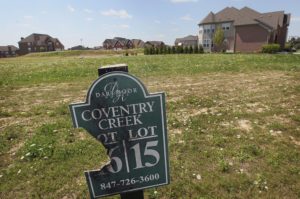Twin Peaks and the dark side of environmentalism inhibiting urbanization

In the latest edition of Pop Culture Urbanism, Nolan Gray takes a closer look at David Lynch’s cult classic, Twin Peaks, and its revelations of the dark side of environmentalism.
The small, secluded logging-town of Twin Peaks might not seem like an ideal example of robust urban development, but as Gray points out, “Urbanism is all around us.” And Twin Peaks has an important hidden lesson about the murky motives behind “not in my backyard-ism” and the way it can distort genuine environmental activism and impede much-needed urban growth.
Environmentalism is a scapegoat frequently used to stop developers from urbanizing areas whose residents, and future residents, could benefit greatly from the expanded opportunities these developments often bring—like new housing and jobs. All too often, these claims turn out not only to be bogus, but also to be used as political pawns to keep out the competition, as we see in the series.
An idea that economists refer to as “bootleggers and Baptists” comes to mind here. The Baptists (environmentalists) sincerely argue for protective laws to help preserve our environment. But their cause is often hijacked by bootleggers, those with selfish motives—like competing developers and homeowner NIMBYs. And Twin Peaks highlights the true nature of these bootleggers.
Put aside the obvious theme of the murder mystery/soap opera series: Who killed Laura Palmer? The show examines many aspects of small-town life from its scandals, eccentric residents, and even the false environmental claims intended to stop Twin Peaks from urban development.
We are all familiar with the archetype of the “evil developer.” Truly, it’s hard to find a pop culture depiction of a developer who isn’t demonized in some way. Ben Horne, owner of the only hotel in town, the department store, and even a brothel, is Twin Peaks’ resident evil developer. That is, until convenience leads him to switch roles and become the “anti-developer.”
The logging mill is a staple in this small town, but Horne would like to see it torn down to make room for his planned “Ghostwood” suburban development and country club. In his overdramatized scheme to buy the land for cheap and destroy the mill, he kills the rightful owner, Catherine, to gain easy access to the land.
In true Twin Peaks fashion, Catherine—who, spoiler alert, isn’t actually dead—re-emerges in disguise with a plot to trick Horne into signing over the Ghostwood development to her, a plan that turns out to be successful.
Drama aside—and rest assured Twin Peaks is filled with it—here is where, as Gray points out, “things get interesting for us urbanist enthusiasts.”
Horne, who is known primarily for his unsympathetic nature, decides to become a bleeding-heart environmentalist—a classic bootlegger move. Looking for a way to keep his development plan in action, he starts a campaign to save the mill in order to save the endangered Twin Peaks pine weasel. In an impassioned, albeit contrived and disingenuous, speech to the town, he speaks on behalf of the pine weasel as though he were the Lorax speaking on behalf of the Truffula Trees.
He pleads with the town to stop the Ghostwood development, lest the pine weasels be wiped out for good.
It appears that some residents have bought into his ruse and fear for the fate of the pine weasel, even though viewers recognize this to be nothing more than a desperate attempt to stop another developer from treading on his territory.
To be fair, not all environmentalists’ claims are intended to harm development. There are many well-intentioned people (the Baptists) who truly want to protect the environment.
But within this seemingly silly plotline, there is a deeper lesson. However well-meaning and authentic many environmentalists may be, stopping urbanization in the name of protecting the environment often comes with very real impacts that harm large portions of the population.
David Lynch might not even have known he tapped into that lesson here, but urbanists like Gray have certainly recognized it.
Devotees of the show know that the series came to a screeching halt right around this plot’s climax, so viewers never get a clear resolution. But true fans who have devoured the book, The Secret History of Twin Peaks, learned that exploiting the plight of the pine weasel allowed Horne to kill Catherine’s project—the very same one he turned against only once he realized it would be of no benefit to him.
The book goes on to explain that Horne’s scheme helps him regain control of the development. Immediately after his victory, he throws the weasel out with the bathwater and proceeds to develop Ghostwood Estates.
Is this plot absurd? Absolutely. But does it represent a very real problem that happens all the time in attempts at urbanization? Again, absolutely.
California’s Environmental Quality Act (CEQA), for example, mandated that local governments must study proposed development projects and determine all environmental impacts they could potentially have.
At face value, that might not seem so terrible. But this law allows third parties to sue the government if it approves any project for which an interested party believes certain environmental impacts weren’t studied, or weren’t studied thoroughly enough.
This means that anyone can use this law to stop, or at least pause, urban development, even if their claims aren’t reasonable. Sometimes all it takes is the threat of a lawsuit to delay projects for months—or even years.
Given how expensive lawsuits and lawyer fees can be, many developers, especially smaller companies, give up altogether and abandon efforts that could have helped many people improve their circumstances through better job opportunities and more affordable housing.
Fewer developments mean fewer housing options. And limited housing options mean less economic growth and less vitality. In the Twin Peaks example, Ghostwood Estates would have provided more housing and opportunities, but the correct way to go about the plan would have been to put the decision rights in the hands of property owners, rather than third-party developers with ulterior motives, whether they be bootleggers or Baptists.
As Gray explains, “It’s estimated that California needs to add 200,000 housing units a year just to keep up with population growth. But for the past 10 years, the state has added fewer than 100,000 each year.”
Using NIMBY rhetoric to stop development has contributed abundantly to housing shortages. When those trying to block new developments, and typically they are competitors who don’t want to share their corner of the market, challenge these cases in court and come out victorious, they are able to charge more for the housing they own because they have wiped out the competition—not to mention their need to bring in more revenue to pay for all the legal fees they have accrued.
Some may argue that this is a small price to pay for protecting the environment, but as we saw in Twin Peaks, environmental claims intended to stop development are often not about protecting the environment at all.
The development projects that are being harmed by the CEQA lawsuits are typically downtown developments in dense neighborhoods in need of new and affordable housing. Some of these developers are focused solely on transforming old, dilapidated buildings into apartments, restaurants, storefronts, and hotels that will benefit the neighborhoods in question.
If this sounds like anti-environmental propaganda, just look at who is actually filing these lawsuits.
As Gray points out in the video:
“According to a 2015 study, more than 85% of the CEQA lawsuits filed from 2010 to 2012 came from groups without any prior record of environmental advocacy at all.”
Many suits are brought forth by bootleggers—labor unions worried that new non-union jobs would threaten their livelihood, or neighbors who simply don’t want to see their neighborhoods change. Let’s also not forget the other culprits: competing developers who want to use government laws to their own advantage.
California is hardly the only state with these types of laws. New York has a similar law that reaps similar consequences—driving up the cost of living—and housing in New York is already extremely expensive.
Scared of lawsuits and pushed out of densely populated cities, developers seek refuge for their projects farther away, where they end up consuming agricultural land. With less public transportation infrastructures in place, new residents also bring with them their vehicles, causing more pollution and decreasing natural environments—maybe even endangering a beloved animal like the pine weasel.
If these were truly sincere concerns brought about by the so-called Baptists, there should be more attention paid to this aspect of the problem. Instead, bootleggers claiming NIMBYism often rear their ugly heads.
Twin Peaks probably didn’t mean to make this profound connection between the pine weasel and the realities of NIMBYism, but Ben Horne brings to light a lot of questions we should all be asking ourselves today.
Watch the latest episode of Pop Culture Urbanism below.






